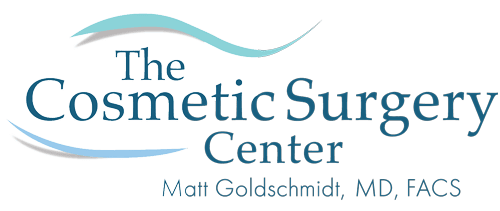Just as there are several options for type, size, and shape of breast implants, there are also several options for where the incision will be made to insert the implants. The choice depends on a number of factors, which you should discuss with your physician.
Here are the most commonly-used incision options:
Inframammary: Below the Breast
Inframammary incisions are made in the fold beneath the breast. They provide good access for inserting nearly any type, shape, or size of implant, so your surgeon can do the best possible job in placing the implant and practicing careful surgical techniques. This incision has been reported to have the fewest complications when compared to the other incision options. Scarring is often minimal, and any scars that do appear are often hidden beneath the fold of the breast – so they cannot be seen even when you are not wearing clothes. This is the preferred incision by most breast implant surgeons.
Periareolar: Around the Areola
Also known as “transareolar,” this incision is made at or around the areola (the pigmented skin surrounding the nipple). While the scar is often easily hidden, especially on people with dark areolas, this incision can disrupt the milk ducts, making it harder or impossible to breastfeed. There is also more chance that the feeling in the nipple and/or areola can be permanently altered with this incision. If your areola is also very small, you may not be a candidate for this incision. It is also not appropriate for all types or sizes of implants.
Transaxillary: Under the Arm
An underarm incision can be hidden well and often heals with little or no scarring. However, this form of insertion prevents the surgeon from seeing exactly where the implants are being placed. As a result, the risk of asymmetrical results (breasts that are a different size, shape, or height from one another) is higher with a transaxillary incision. It can also be difficult to place the implant at the appropriate height with this incision. Also, these incisions stay red for a long time and can be seen when wearing a tank top or bathing suit.
Transumbilical: Through the Navel
Also known as a “TUBA” incision, these types of insertion procedures are rarely, if ever, used in breast augmentation surgeries since they can only be used with saline implants. Most patients today choose gel implants which cannot be placed with this option. Like the transaxillary incision, this option does not allow the surgeon to see exactly where the implant is being placed. Other options tend to produce better results. Furthermore, a small incision under the breast is necessary in addition to the incision inside the belly button.
Several methods are available to help your incision heal with a minimum of scarring, no matter where it is located. If you have questions about the incision, potential scarring, or any other part of the procedure, don’t hesitate to talk to Dr. Matt Goldschmidt.
For a free, private consultation about your breast augmentation surgery options in Cleveland, please call Dr. Goldschmidt and his team at The Cosmetic Surgery Center at (216) 264-8100.
